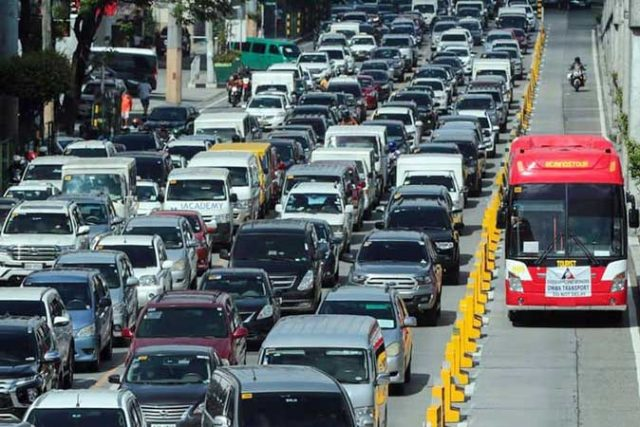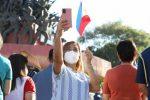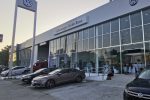MMDA proposes two new number coding schemes

FILE PHOTO
The Metropolitan Manila Development Authority (MMDA) has proposed two options for the implementation of an expanded number coding scheme in the National Capital Region.
MMDA chairperson Romando Artes presented the proposals to President Rodrigo Duterte during his Talk to the People last Monday in light of the increasing volume of vehicles in areas under Alert Level 1.
Under the first option, vehicles with plate numbers ending with odd numbers 1, 3, 5, 7, and 9 would not be allowed on roads on Mondays and Thursdays from 7 a.m. to 10 a.m. and from 5 p.m. to 8 p.m.
Those with plate numbers ending with even numbers 2, 4, 6, 8, and 0 would be prohibited on Tuesdays and Fridays during the same time periods.
All vehicles would be allowed on roads on Wednesdays.
Meanwhile, under the second option, vehicles with plate numbers ending with 1, 2, 3, and 4 would be prohibited on Mondays; 5, 6, 7, and 8 on Tuesdays; 9, 0, 1, and 2 on Wednesdays; 3, 4, 5, 6 on Thursdays; and 7, 8, 9, and 0 on Fridays.
In February, the MMDA said it is studying the possible expansion of the afternoon number coding scheme, which is set from 5 p.m. to 8 p.m.
Meanwhile, Transport advocates and academicians called on the government to shift its transportation paradigm from moving vehicles to moving people as they called for the establishment of a National Transport Institute.
This institute would lead the way in studying how Filipinos want to move within their communities, whether it be via walking, biking, public transport, or use of their own motor vehicles.
The Move As One Coalition, WeSolve Foundation, and the Department of Interdisciplinary Studies at the Ateneo de Manila University would instruct both the national government and local government units in collecting data on transportation.
This would shift focus from counting car/vehicle registrations, road construction, and response and resolution time for traffic obstructions as success indicators, to a more “people-centric” mobility.
Advocates said the National Transport Institute would help the MMDA, DPWH and DOTr through training and funding so that they can collect information that is more useful in determining how people are moved. These include household vehicle ownership, transport spending, bicycle counts, and commuting difficulty.
“Initial estimates, at the national level a transport institute would cost P50M to P82M and would be home to 77 to 135 staff. Wala pa po dito yung specific data collectors, kunwari may new survey to come up because we have to collect certain data, operation side yon, hindi pa kasama sa scope,” said Daniel Joseph Benito of the WeSolve Foundation.
Ken Abante of the Department of Interdisciplinary Studies at the Ateneo de Manila University said the national government should also provide funding support for LGUs who wish to start collecting their own people-centric mobility data, to improve overall transportation for their constituents.
“In the first year of the pilot around P202 million as the first year grant to LGUs who would be willing to apply to this local transport capacity support fund,” he added.
Abante noted, even the most progressive LGUs, such as Naga City in Bicol, have limited resources when it comes to transport.
Dominic Nobleza, LGU Staff in Naga City, said the active transport office of the city has one staff member, and they were only able to make headway thanks to help from civil society groups such as the Move As One Coalition.
“There is a need to take a look at the population of active transport, bigyan sila ng bike lanes, bike parking. Implementing budget, halos, almost nearing to zero. Nung nagkakaroon na ng measure of registered bikers, and nakita na ang activities, talagang nakita naman ng legislative body na kailangan bigyan ng budget.”
Abante said once the National Transport Institute is set up, more people-centric mobility data can be collected to help convince Congress of the importance of moving people instead of cars.
“Something as simple as a cycling count or biking count. In Naga from 181 in 2019 to 4,000 plus in 2021. In many hours (of the day), yung Bicol State College of Applied Science and Technology, there are even more bikes than cars at certain times of the day. This pushes LGUs to really take notice.”
Eldon Dionisio, Senior Transport Development Officer at the Department of Transportation agrees that LGUs need more support to accomplish these new directives to ensure their policies keep up with best practices from around the world.






